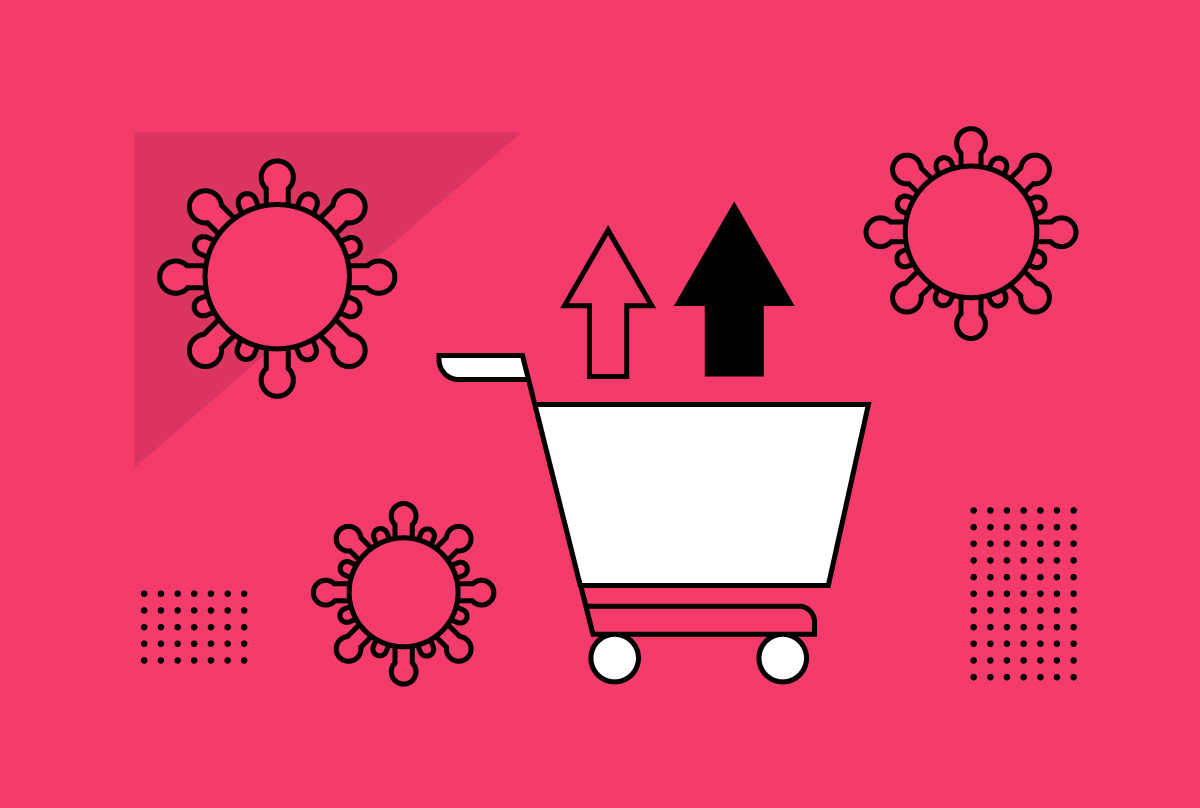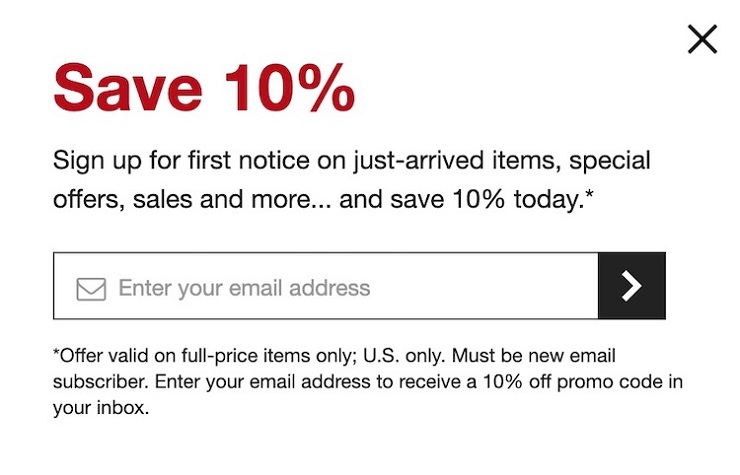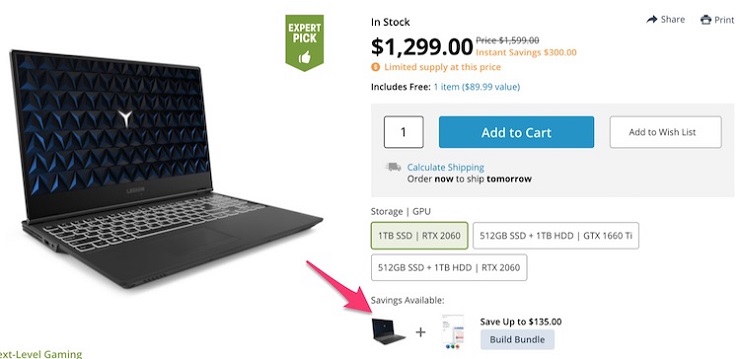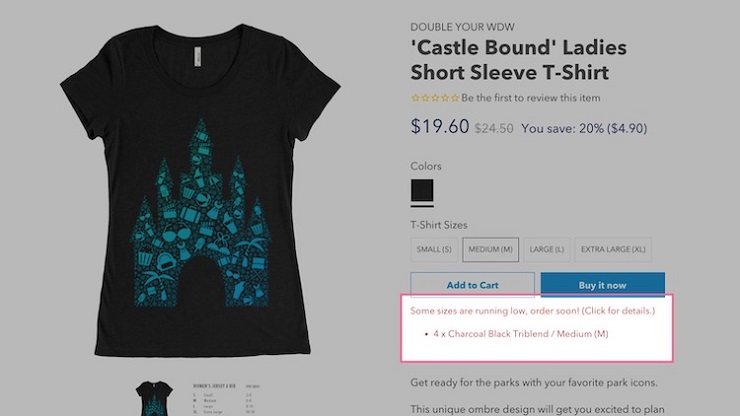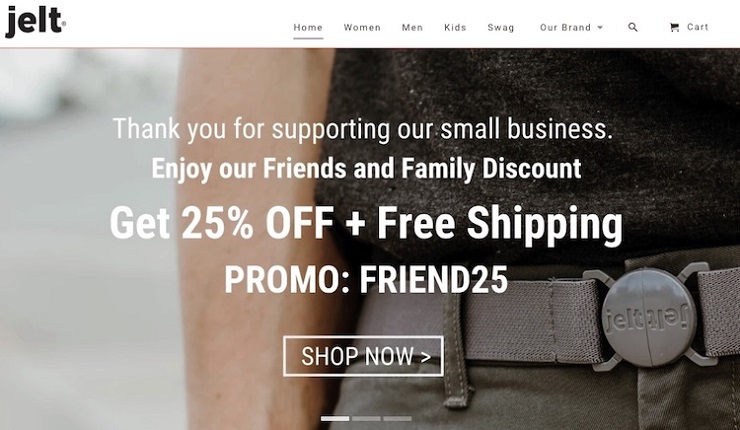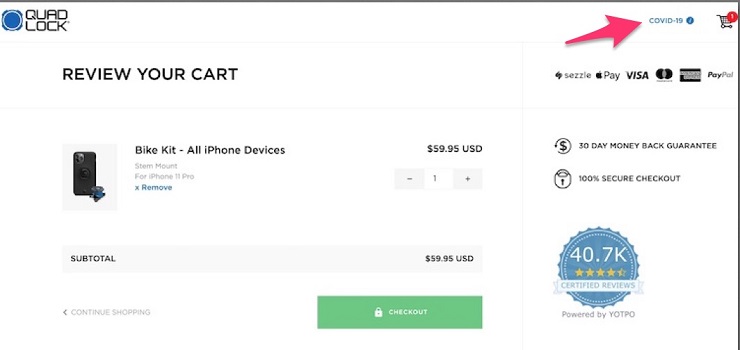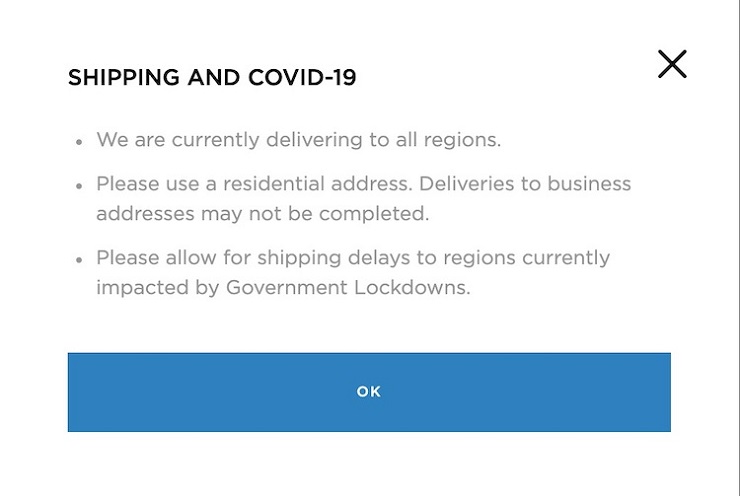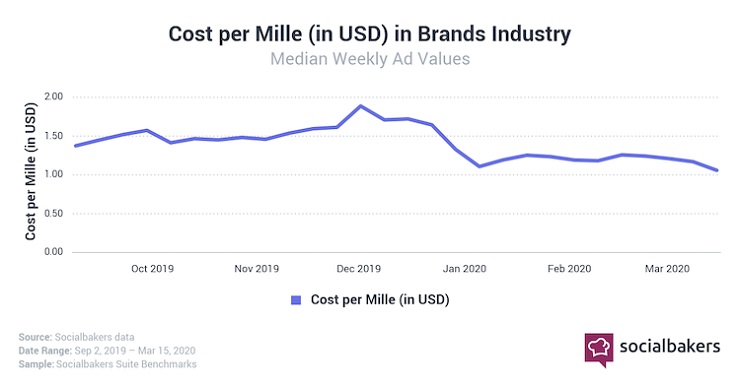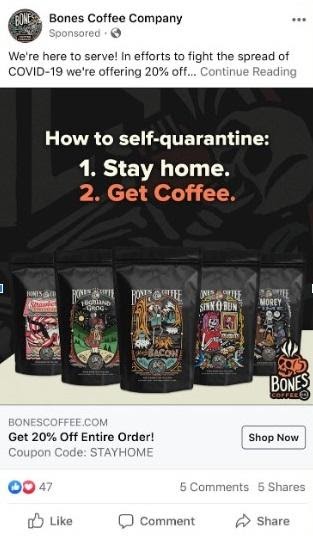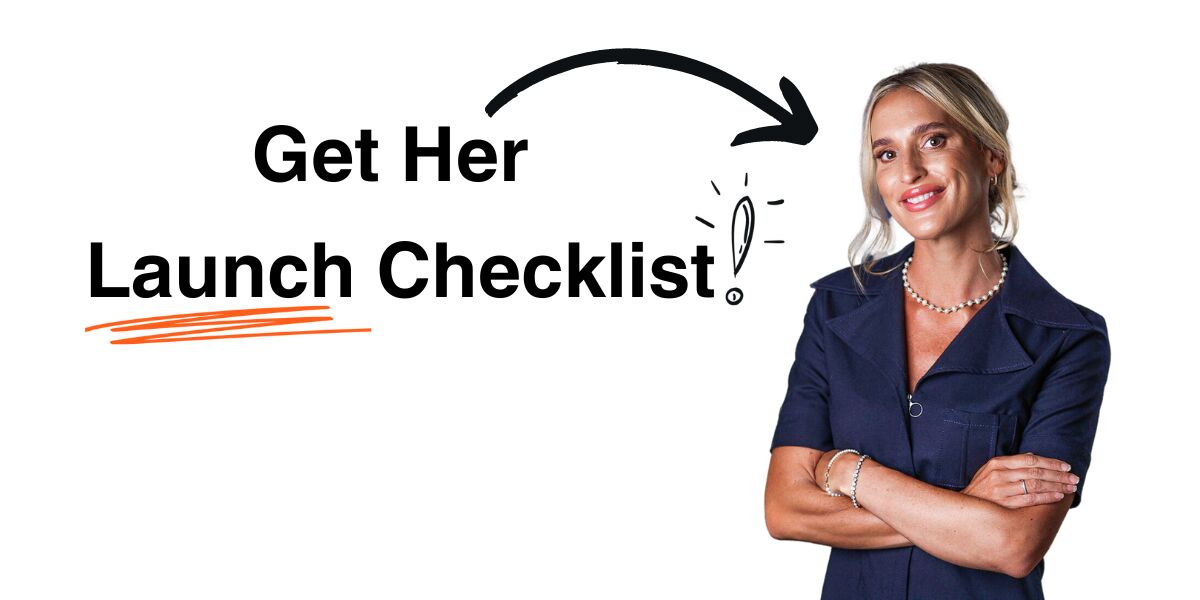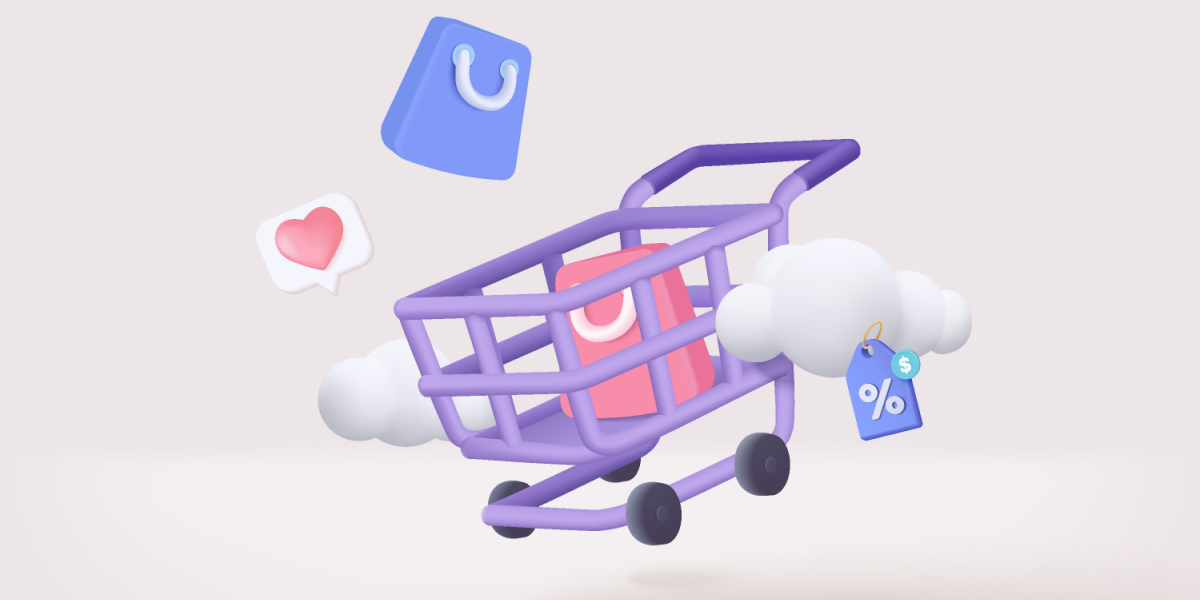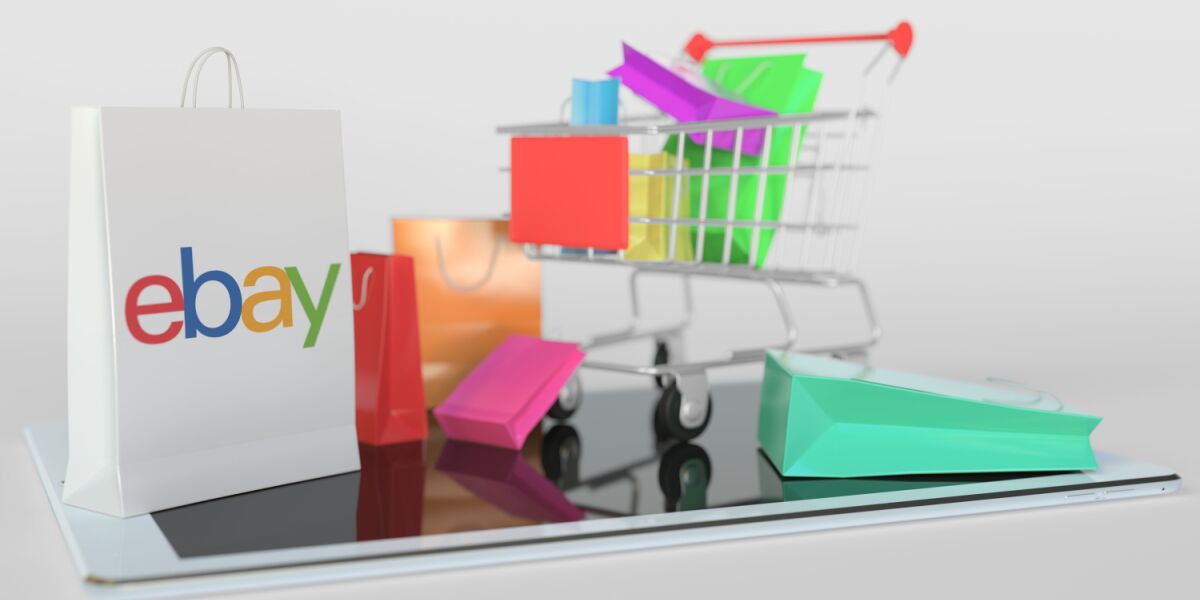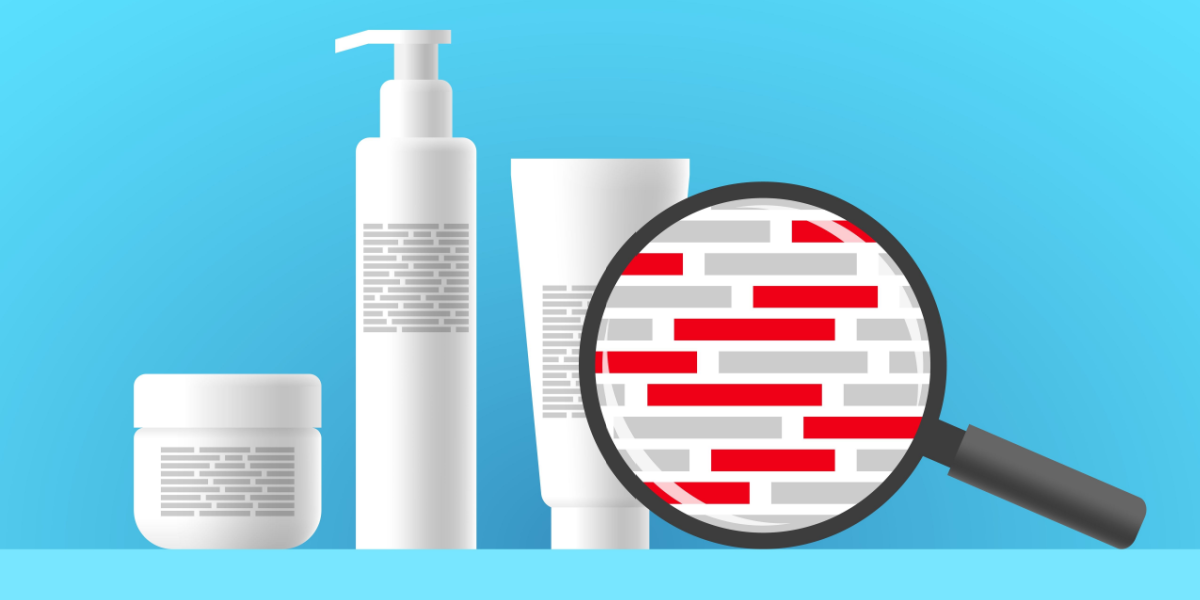As COVID-19 has spread to every corner of the world, the ecommerce industry, like the rest of the global economy, is entering a downturn unlike anything we’ve ever seen before.
Some estimates have indicated that the pandemic could cost the global economy as much as $2.7 trillion (or 3% of global GDP). Compare this to the 2003 SARS epidemic, which was estimated to cost about $40 billion (or 0.1% of the global GDP of that time), and the magnitude of our current crisis becomes very clear.
This pandemic has affected just about every business you can imagine, and if you have an ecommerce store, yours is almost certainly one of them.
Industry reports indicate that those affected by quarantine and social distancing measures—which have been implemented pretty much throughout the world and are still in place in most countries—have moved much of their purchasing online. For example, grocery apps in the US have seen a sharp increase in downloads in March, following a similar pattern in China and Latin America.
But this has not been the case for many ecommerce stores, for two potential reasons:
- People have become more sensitive to pricing and less interested overall in making purchases.
- The supply chain has been damaged by quarantines pushed by governments to limit warehouse and transport activity.
Despite these challenges, ecommerce store owners still have a critical role to play in the economy and can work to better serve the public, even in these difficult times. Founders can overcome many of the problems caused by COVID-19, by making some changes to their overall strategies.
If you have suffered a decrease in sales since the quarantine started and you want to overcome this problem right away, we’ll discuss five ways you can do it in this post.
These changes won’t be miraculous. The underlying causes of ecommerce sales slumps we’re seeing right now run far deeper than your own marketing and operations. Every business is feeling pain right now. But minimally, you can work to mitigate the impact of COVID-19 and create much stronger, longer-lasting relationships with your existing customers in the process.
Use Scarcity-Driven Promos
The economic downturn caused by this crisis will lead to much higher unemployment rates, as assessed by multiple analyses. This, in turn, has affected online shopping behavior, according to SaleCycle.
For one, abandonment cart rates are spiking in most industries.
On the other, average order values (AOV) are changing drastically, with AOVs for industries such as grocery, pharmaceutical, and general retail increasing, and electronics, sports, and travel decreasing.
In difficult times, money becomes a scarce asset, and people don’t want to spend it. But scarcity is also a concept that can be put to use in marketing efforts, with limits on availability of products and lower prices increasing consumers’ willingness to buy.
Create Time-Limited Offers
Any type of discount, deal, special gift, or reward a buyer can get if they make a purchase from you during a certain time period will boost the need for them to purchase. You can start by giving time-sensitive discounts. To do this, you have two options:
- Offer them in your opt-in forms (pop-ups, slide-ins, etc.)
- Offer them to your email subscribers
In the first case, you can offer these discounts to those who visit your site, spend a certain amount of time on it (e.g., more than 60 seconds), or visit a certain number of pages (e.g., more than 3 pages).
Some online retailers choose to offer these discounts only to those who sign up to their email list.
You can then use this strategy and create a welcome email campaign, which introduces your subscribers to your brand and helps them see the products you sell.
Whether they use this discount or not, you can still keep your email subscribers engaged so they might make a purchase in the future.
You can also give a free or highly discounted product, bundled with one of your best-selling products.
This can work especially well if you know that certain products sell very well with some others. By bundling them, you are basically telling them what’s best for them based on what your customers have told you with their past behavior.
Create Quantity-Limited Offers
Time isn’t the only form of scarcity you can leverage in your marketing campaigns. Your stock also is limited, so use it to nudge your visitors to make a purchase they may be on the fence about.
Online fashion retailers often use sales, like the ones you see at the end of a season, to offer their products discounted for a limited time. The idea comes from the brick-and-mortar realm where retailers unload their unsold stock so they can prepare for their next season—a truly win-win situation.
Online retailers, however, tend to abuse it, as they constantly have sales going on, with their “limited” products being restocked all the time.
You can still use this type of scarcity-focused campaign to drive some sales.
For one, you can create special discounts similar to the above examples. All you have to do is create new pop ups and slide-ins that highlight these discounts as well as new product categories in your ecommerce platform of choice—I’ll assume it’s Shopify—and that’s pretty much it.
You can also use some apps that help you promote these campaigns even further:
Or, you can highlight the limited stock in your product pages. This adds some pressure to the consumer’s decision, since someone who is leaning toward buying one of your products will act fast before it’s too late.
There are many apps that help you leverage this limited quantity.
If your store is in the health industry, then you might see that some of your products are seeing big increases in sales, as we saw in the study done by SaleCycle.
That’s why highlighting the limited quantity of your products and explaining that you may not be able to restock them soon—which is likely what you are experiencing—can be very effective.
Better yet, position this discount as a way to thank your customers to help your small business thrive.
But please, if you don’t have limited quantities, don’t lie to your visitors. We’re going through a crisis unlike we have seen in decades, so don’t pressure your visitors into buying your supposed “limited products” when it’s not the case. Nothing justifies lying to your customers, but that’s especially the case in this scary and uncertain time.
Update Your Shipping Times
Your online store isn’t the only one that’s being impacted by the pandemic. The world’s entire supply chain has been affected—from a decrease in China’s manufacturing output to a breakdown of the logistics chain in ports all over the world—so your store needs to communicate how this will affect your orders.
Your customers probably understand the magnitude of the problem already, but in case they don’t or in the case they want to know how it will affect their specific orders, you’ll need to update your shipping times accordingly.
You can do that by adding a note in your product page or in your checkout page—ideally, in both places.
This is something that Rob Ward, co-founder of Quad Lock and instructor of our Ecommerce Masters course, does very well in his company’s product page:
When you click there, you get this message:
This type of messaging helps your customers, who can understand the extended time it will take them to get their products. You can also let them know what your company is doing to help them in these times.
Certain Lending, while not an ecommerce business, does a nice job of opening up to assure their customers they are still working. It’s a small act that some may not even consider important, but it helps to reassure how their brand is there for its customers.
Explain to your customers that this is something much greater than you can handle. Not even Amazon can run away from this problem, so detail what’s not working right now, including:
- Your manufacturing
- Your warehouse
- Your transportation company
- Your employees (if you have any)
It’s not easy to explain how your customers will receive a lower quality purchase experience, but if you do it honestly, your customers will understand and it won’t affect them too much.
Change Your Paid Ads Strategy
For the past few weeks, the costs of Facebook ads and Google Adwords have dropped significantly. This is something that our Ecommerce Masters instructor, Nick Shackelford, has confirmed in a recent webinar for students.
Recently, Socialbakers found that CPMs across the board of all industries are half of what they used to be. This makes sense given the fact there are fewer brands spending money on advertisement; it’s a matter of offer and demand.
CPCs are also down from last year:
As Nick explained, right now it’s best to invest your money in brand awareness-focused campaigns that focus on increasing your reach, not on making sales. Your goal should be to get them to sign up for your email list and enter your sales funnel.
Recent Nielsen’s consumer research observed that as the COVID-19 crisis wanes, people will get back to a “new normal.” This means people will get back to living their lives as before, while still keeping a “renewed cautiousness about health.”
That means your ad messaging should also change.
If your brand is in the health industry, this will be obvious. Your headlines, titles, and descriptions should mention how your customers can:
- Avoid illness
- Stay healthy
- Regain strength after illness
- Stay clean
- Keep their defenses up
If your brand isn’t health-related, you can still focus your ads on relevant angles. One common approach has been to focus on dealing with isolation and working remotely:
Times are changing fast, so adapt your paid ads accordingly.
Lower Your Prices (Temporarily)
In times of need, people save their money at all costs. This doesn’t mean they won’t buy anything, it just means they are more price sensitive.
As happens in most economic crises, people panic easily and quickly, transforming their purchasing behavior. It’s a knee-jerk reaction—when you hear the economy is bad, you start saving money.
This doesn’t mean you shouldn’t or couldn’t spend money—especially if you have saved some for situations like this one—it just means you become more hesitant to spend it.
What used to seem cheap, now seems not so cheap. What was once a reasonable price no longer is.
So what an ecommerce store owner can do in times of despair is to temporarily lower their prices to encourage people to buy. You see this all the time in souqs and other old-school street markets—if the buyer finds this price too expensive, you can lower it until they agree to a purchase.
Is this a preferred strategy? Far from it. Lowering your prices is probably the least desirable way to increase your sales, but in difficult times, it may be worth the sacrifice.
The premise behind this idea isn’t to act out of desperation. This is what many ecommerce retailers do and it’s what drives many to bankruptcy.
The key word is temporarily. You lower your prices for a short period of time—it can be a few weeks or a few months, depending on the particular circumstances of your store—to make sales at a lower profit margin, but hoping to compensate with sales high enough to keep your overall profits intact.
Someone who put this idea clearly was Steve McLeod, who in a recent interview with Nathan Chan, explained that cutting costs makes it hard to reach new audiences. So instead of focusing on getting new sales, he recommends focusing on your existing customers.
You can target your lower prices only to those who have signed up to your email list or previous customers. This would be like mixing this idea with the first one—using scarcity to incite more sales—to highlight a temporary price reduction and help consumers who were interested in buying your products before to buy them now.
A big important caveat is that if your products have a low purchase frequency—if people buy your products once every year or more—then this strategy may not work. But if your products benefit from bundling and high-frequency purchases, then this can help you.
Wrap Up
These are just a few ways you can overcome a slump in sales during this new and evolving crisis. We can’t know for sure how hard it will hit the economy—wherever you are located—or how long it will last. All we know is that you will likely need to change your strategy in response.
Use this challenging time as an opportunity to think deeply about your business—why it does what it does, how it serves its customers—and how you can improve in every part of it. Use it also to strengthen the relationship with your customers; they will remember everything you do to help them get your products in time and overcome this crisis that also affects them.
Finally, no matter how bad things may get, remember that it’s temporary. As the old Persian adage goes, “This too shall pass.”
If you can use it to improve your business, then your store will be in a much stronger position once the time has passed.
